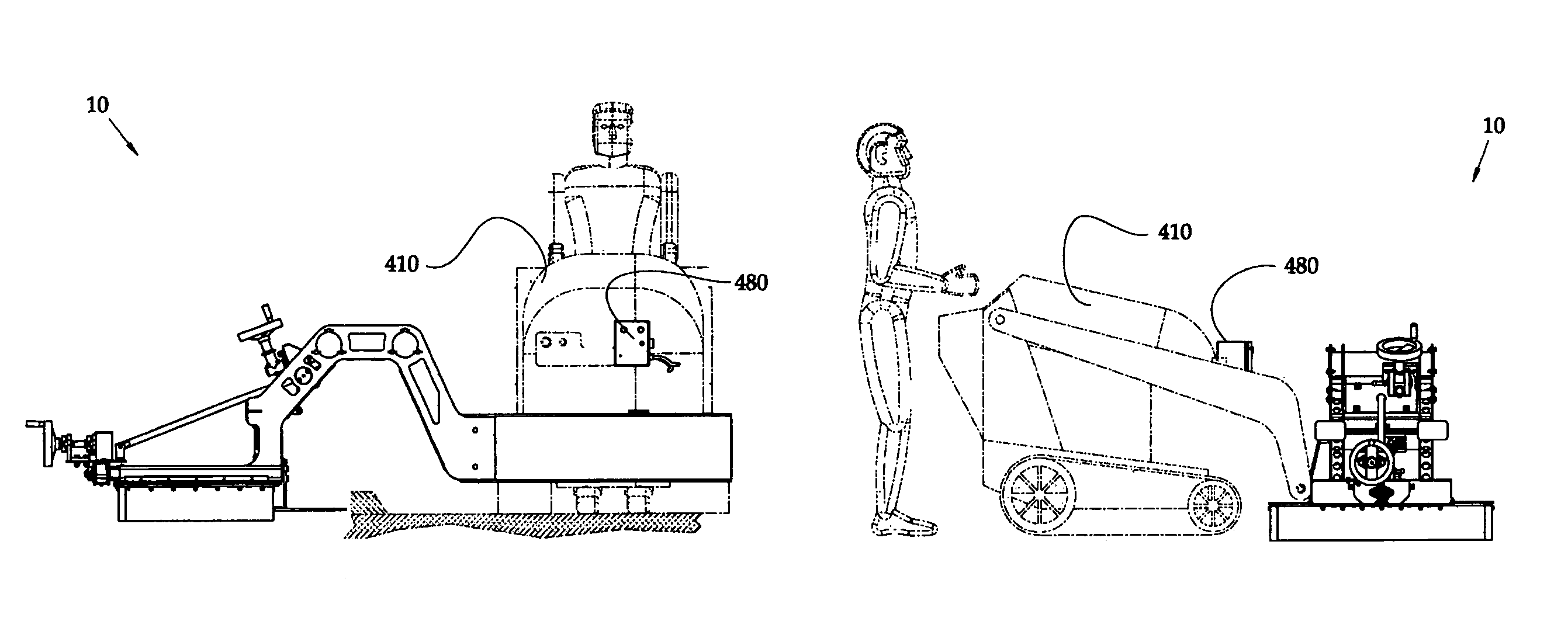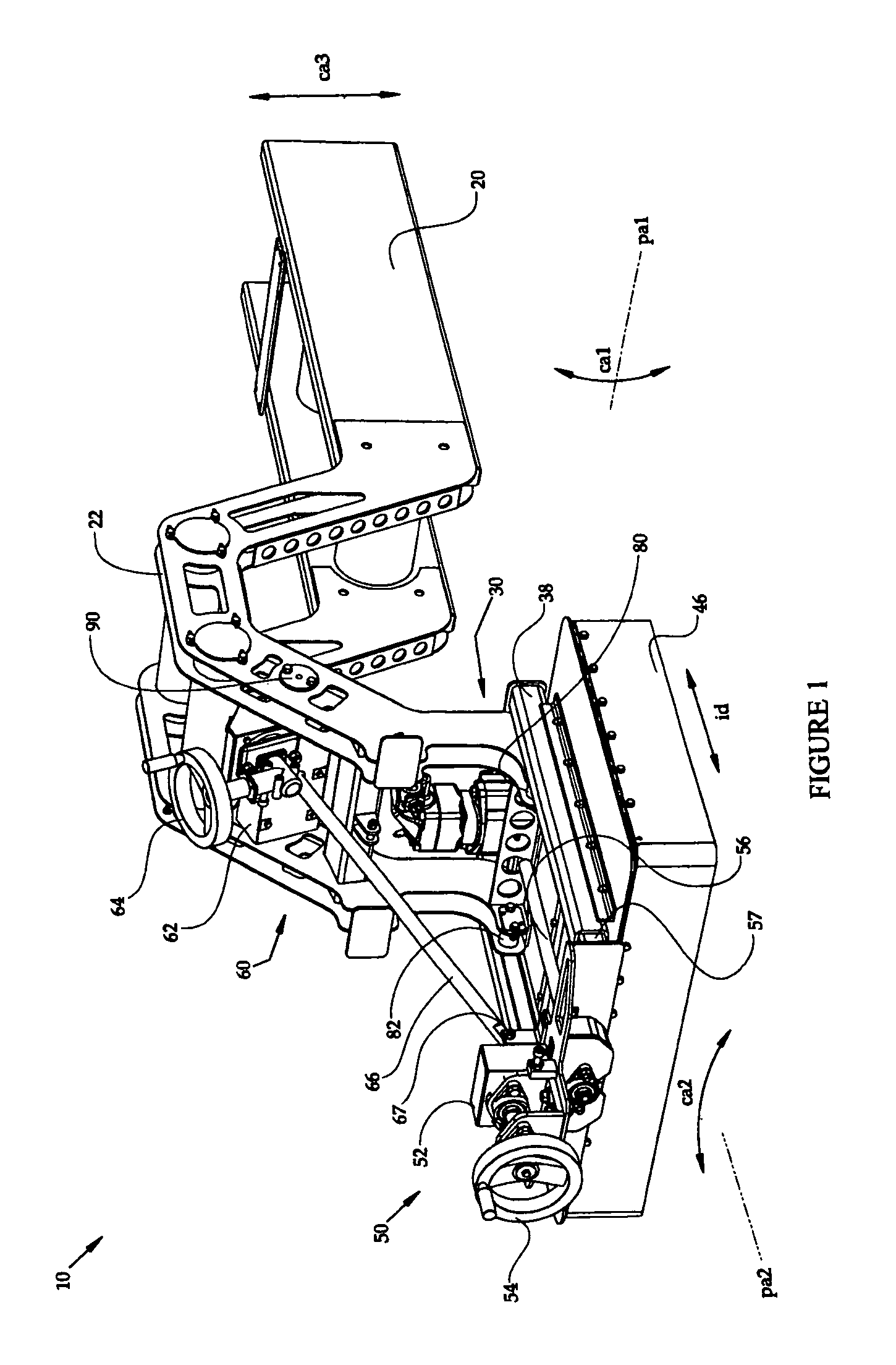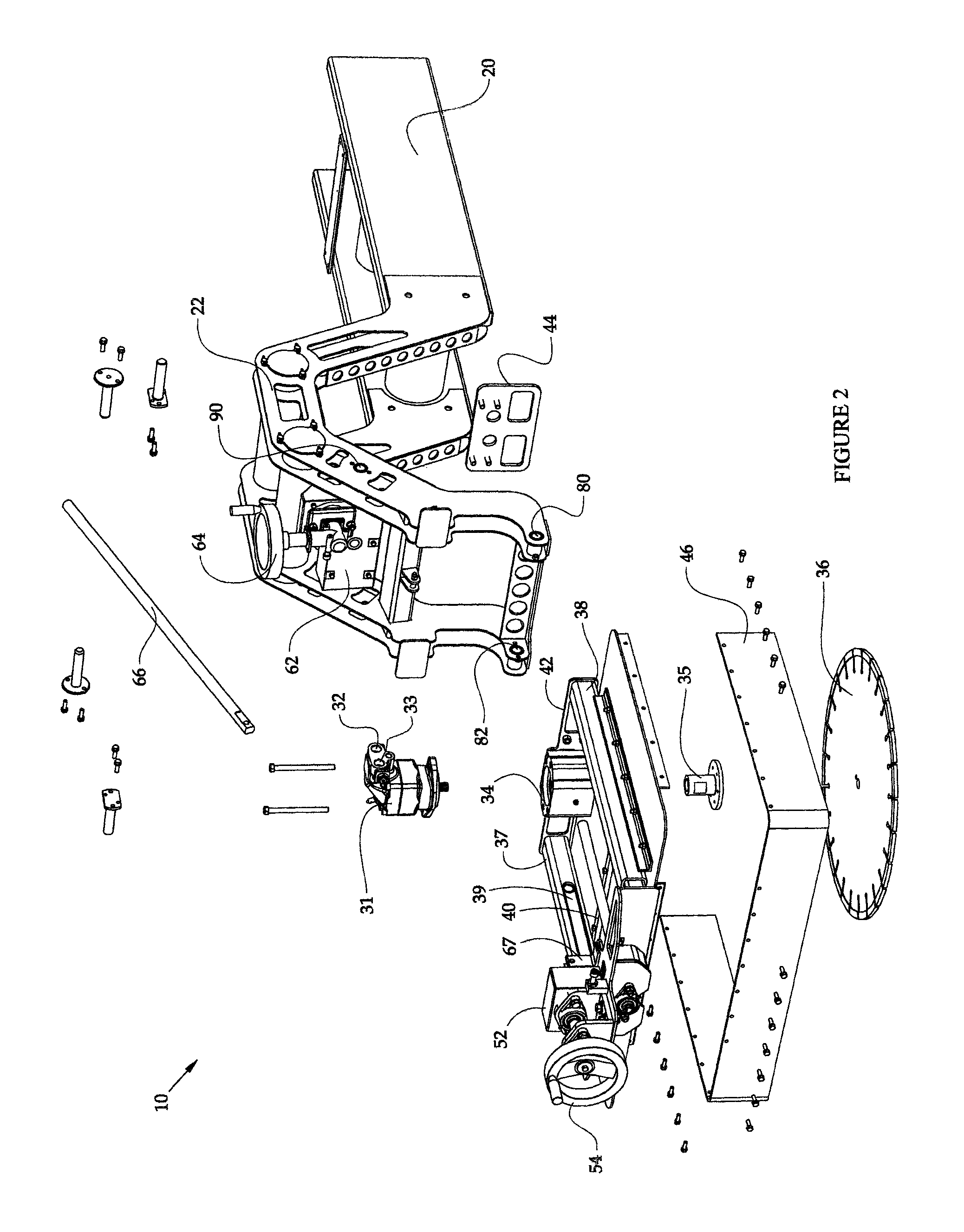Cutting attachment apparatus and method
a technology of attachment apparatus and cutting blade, which is applied in the field of cutting, can solve the problems of slowing down the operation capability of such machines, affecting the operation efficiency of large and heavy machines, and difficulty in performing various cuts to existing concrete structures, etc., and achieves the effects of increasing the insertion depth, and reducing the insertion angl
- Summary
- Abstract
- Description
- Claims
- Application Information
AI Technical Summary
Benefits of technology
Problems solved by technology
Method used
Image
Examples
Embodiment Construction
[0044]A cutting attachment apparatus and method comprise an attachment frame, and a host machine interface coupled with the attachment frame for coupling the attachment with a host machine. A cutting assembly is coupled with the attachment frame. A cut insertion depth assembly is coupled with the attachment frame and the cutting assembly for altering the insertion depth of a cut of the cutting assembly, and a cut angle assembly is coupled with the attachment frame and the cutting assembly for altering an angle of the cut of the cutting assembly. In a further embodiment, the attachment frame includes an A-frame portion, and where the cutting assembly being coupled with the attachment frame includes the cutting assembly being coupled with the attachment frame proximate the A-frame portion, allowing for the cutting assembly to accomplish a cut within a perimeter of the attachment frame. In another embodiment, the cutting attachment apparatus extends over the object, where the object ha...
PUM
| Property | Measurement | Unit |
|---|---|---|
| 90 degree angle | aaaaa | aaaaa |
| height | aaaaa | aaaaa |
| heights | aaaaa | aaaaa |
Abstract
Description
Claims
Application Information
 Login to View More
Login to View More - R&D
- Intellectual Property
- Life Sciences
- Materials
- Tech Scout
- Unparalleled Data Quality
- Higher Quality Content
- 60% Fewer Hallucinations
Browse by: Latest US Patents, China's latest patents, Technical Efficacy Thesaurus, Application Domain, Technology Topic, Popular Technical Reports.
© 2025 PatSnap. All rights reserved.Legal|Privacy policy|Modern Slavery Act Transparency Statement|Sitemap|About US| Contact US: help@patsnap.com



